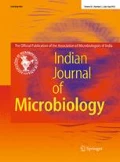Abstract
Treatment of tuberculosis still represent a major public health issue. The emergence of multi-and extensively-drug resistant (MDR and XDR) Mycobacterium tuberculosis clinical strains further pinpoint the urgent need for new anti-tuberculous drugs. We previously showed that vancomycin can target mycobacteria lacking cell wall integrity, especially those lacking related phthiocerol and phthiodolone dimycocerosates, PDIM A and PDIM B, respectively. As aloe emodin was previously hypothesized to be able to target the synthesis of mycobacterial cell wall lipids, we tested its ability to potentiate glycopeptides antimycobacterial activity. The aloe emodin with the vancomycin induced a combination effect beyond simple addition, close to synergism, at a concentration lower to reported IC50 cytotoxic value, on M. bovis BCG and on H37Rv M. tuberculosis. Interestingly, out of six MDR and pre-XDR clinical strains, one showed a strong synergic susceptibility to the drug combination. Mycobacterial cell wall lipid analyses highlighted a selective reduction of PDIM B by aloe emodin.

References
Global tuberculosis report (2017) Geneva: World Health Organization; 2017. Licence: CC BY-NCSA3.0 IGO. http://apps.who.int/iris
Gupta R, Thakur B, Singh P, Singh HB, Sharma VD, Katoch VM, Chauhan SV (2010) Anti-tuberculosis activity of selected medicinal plants against multi-drug resistant Mycobacterium tuberculosis isolates. Indian J Med Res 131:809–813
Tian B, Hua YJ, Ma XQ, Wang GL (2003) Relationship between antibacterial activity of aloe and its anthaquinone compounds. Zhongguo Zhong Yao Za Zhi 28:1034–1037
Camacho–Corona M del R, Favela-Hernández JM de J, González–Santiago O, Garza–González E, Molina–Salinas GM, Said-Fernández S, Delgado G, Luna-Herrerae J (2009) Evaluation of some plant-derived secondary metabolites against sensitive and multidrug-resistant Mycobacterium tuberculosis. J Mex Chem Soc 53:71–75
Ramesh KV, Purohit M, Mekhala K, Krishnan M, Wagle K, Deshmukh S (2008) Modeling the interactions of herbal drugs to beta-ketoacyl ACP synthase of Mycobacterium tuberculosis H37Rv. J Biomol Struct Dyn 25:481–493. https://doi.org/10.1080/07391102.2008.10507195
Soetaert K, Rens C, Wang XM, De Bruyn J, Lanéelle MA, Laval F, Lemassu A, Daffé M, Bifani P, Fontaine V, Lefèvre P (2015) Increased vancomycin susceptibility in mycobacteria: a new approach to identify synergistic activity against multidrug-resistant mycobacteria. Antimicrob Agents Chemother 59:5057–5060. https://doi.org/10.1128/AAC.04856-14
Daffé M, Crick D, Jackson M (2014) Genetics of capsular polysaccharides and cell envelope (glyco) lipids. Microbiol Spectrum 2: MGM2-0021-2013. https://doi.org/10.1128/microbiolspec.mgm2-0021-2013
Rens C, Laval F, Daffé M, Denis O, Frita R, Baulard A, Wattiez R, Lefèvre P, Fontaine V (2016) Effects of lipid-lowering drugs on vancomycin susceptibility of mycobacteria. Antimicrob Agents Chemother 60:6193–6199. https://doi.org/10.1128/AAC.00872-16
Simeone R, Huet G, Constant P, Malaga W, Lemassu A, Laval F, Daffé M, Guilhot C, Chalut C (2013) Functional characterization of three O-methyltransferases involved in the biosynthesis of phenolglycolipids in mycobacterium tuberculosis. PLoS ONE 8:e58954. https://doi.org/10.1371/journal.pone.0058954
Cui XR, Tsukada M, Suzuki N, Shimamura T, Gao L, Koyanagi J, Komada F, Saito S (2008) Comparison of the cytotoxic activities of naturally occurring hydroxyanthraquinones and hydroxynaphthoquinones. Eur J Med Chem 43:1206–1215. https://doi.org/10.1016/j.ejmech.2007.08.009
Guo JM, Xiao BX, Liu Q, Zhang S, Liu DH, Gong ZH (2007) Anticancer effect of aloe-emodin on cervical cancer cells involves G2/M arrest and induction of differentiation. Acta Pharmacol Sin 28:1991–1995. https://doi.org/10.1111/j.1745-7254.2007.00707.x
Bunluepuech K, Sudsai T, Wattanapiromsakul C, Tewtrakul S (2011) Inhibition on HIV-1 integrase activity and nitric oxide production of compounds from Ficus glomerata. Nat Prod Commun 6:1095–1098
Acknowledgements
Céline Rens was supported by “Les amis des Instituts Pasteurs à Bruxelles” asbl. We thank Pr. Caroline Stevigny for providing us the first aloe emodin pure product and Dong Yang for his help in the manuscript layout.
Author information
Authors and Affiliations
Corresponding author
Ethics declarations
Conflict of interest
The authors declare that they have no conflict of interest.
Rights and permissions
About this article
Cite this article
Rens, C., Ceyssens, PJ., Laval, F. et al. Aloe Emodin Reduces Phthiodiolone Dimycocerosate Potentiating Vancomycin Susceptibility on Mycobacteria. Indian J Microbiol 58, 393–396 (2018). https://doi.org/10.1007/s12088-018-0734-0
Received:
Accepted:
Published:
Issue Date:
DOI: https://doi.org/10.1007/s12088-018-0734-0

